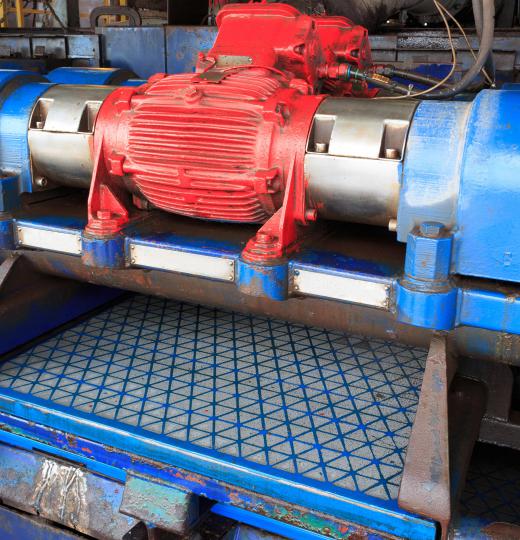A mud tank is a large storage container used to hold reserves of drilling fluid, also known as drilling mud, for a drill rig. Drilling fluid is used to reduce friction on drill components to allow them to work harder and faster with less risk of breaking down. Numerous companies manufacture and refurbish mud tanks of various shapes and sizes for industrial use, and contractors who specialize in cleaning tanks and other drilling equipment are also available. The cost for tanks and associated services varies widely, especially when custom designs are involved.
Historically, pits in the ground near a well were used to hold drilling mud, and mud tanks are sometimes still referred to as mud pits in a reference to this. A modern mud tank is a large container, typically open topped and divided into several compartments. In some settings, a top may be used to reduce the risk of worker accidents, with a guard rail and a catwalk allowing people to look into the tank to check on the level and consistency of the drilling fluid.

New fluid can be periodically added, and components can be mixed in to change the formulation if it is deemed necessary. Drilling mud acts as a lubricant and coolant and the demands placed on it are very high. It is critical to maintain a steady supply at a drilling site to avoid shut downs. If a rig runs out of fluid, shutting it down temporarily can be extremely expensive.
Different mixtures of drilling fluid are used, depending on the type of drilling being done, the geology, and the equipment in use. The mud tank stores fluid for pumping over and through the drill. Mud tanks can also be set up to receive recycled drilling fluid, a common practice on many sites. In these situations, fluid is pumped back up from the drilling site, passed through a series of tanks to separate the fluid from rocks and other debris, and then routed back into a mud tank for storage.
These tanks can eventually become caked in drilling mud and may be corroded by components in the fluid. For this reason, companies periodically drain and clean out their tanks with pressure washers and other equipment. A large company many handle its own mud tank cleaning and maintenance, while smaller companies can call in a firm to clean their mud tanks and prepare them for continuing service in the field.
Ever since she began contributing to the site several years ago, Mary has embraced the exciting challenge of being a About Mechanics researcher and writer. Mary has a liberal arts degree from Goddard College and spends her free time reading, cooking, and exploring the great outdoors.

